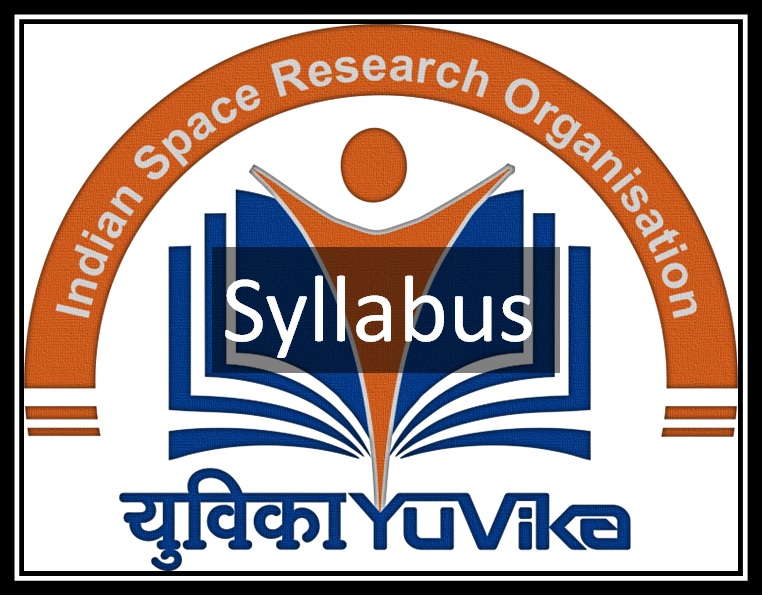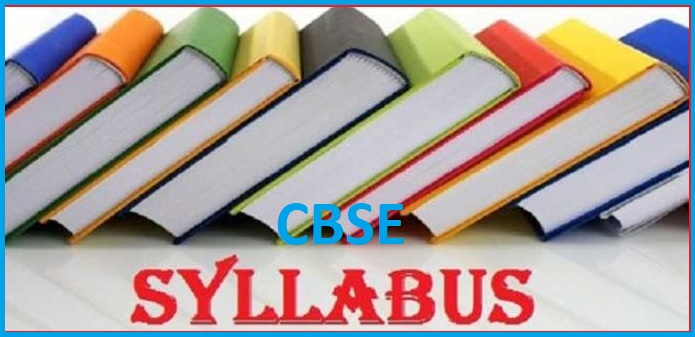JEE Main Syllabus 2024: Physics, Chemistry and Mathematics

For candidates aspiring to become engineer, architect or city planner, JEE is one of the most crucial exams to appear in. Clearing this exam makes the candidate eligible for admission into IITs all over the country.
JEE is conducted in two phases- Main and Advanced. Clearing JEE Main is the first stage of the exam and is also the criteria for appearing in JEE Advanced paper.
To prepare for JEE Main, it is important for the candidates to familiarize themselves with its syllabus properly. This article provides information about JEE Main syllabus 2024 for applicants preparing for the exam.
JEE Main 2024 Syllabus
JEE Main will be conducted for three papers:
- Paper 1: For BE/ B.Tech course- Mathematics, Physics & Chemistry
- Paper 2A: For B.Arch course- Mathematics, Aptitude & Drawing
- Paper 2B: For B.Planning course- Mathematics, Aptitude & Planning
The JEE Main syllabus for all the three papers are discussed below in detail. Knowledge of syllabus along with exam pattern is important for exam preparation.
Paper 1 Syllabus for BE/ B.Tech
Below here is the detailed syllabus for Paper 1 of JEE Main:
MATHEMATICS
| Units | Chapters | Important topics |
| Unit 1 | Sets, Relations And Functions | Union, intersection and complement of sets, Power set, Relation, Type of relations, equivalence relations, functions, etc |
| Unit 2 | Complex Numbers And Quadratic Equations | Complex numbers, representation of complex numbers, Argand diagram, algebra, modulus and argument of a complex number, etc |
| Unit 3 | Matrices And Determinants | Matrices, algebra & type of matrices, determinants and matrices of order two and three, properties & evaluation of determinants, etc |
| Unit 4 | Permutations And Combinations | Fundamental principle of counting, permutation as arrangement & combination as section, Meaning of P (n,r) and C (n,r), simple applications |
| Unit 5 | Mathematical Inductions | Principle of Mathematical Induction and its simple applications |
| Unit 6 | Binomial Theorem And Its Simple Applications | Binomial theorem for a positive integral index, general term and middle term, properties of Binomial coefficients, etc |
| Unit 7 | Sequence And Series | Arithmetic and Geometric progressions, insertion of arithmetic, geometric means between two given numbers, Relation between AM and GM, etc |
| Unit 8 | Limit, Continuity And Differentiability | Real-valued functions, algebra of functions, inverse function, polynomials, rational, trigonometric, logarithmic and exponential functions, etc |
| Unit 9 | Integral Calculas | Integral as an anti-derivative, Fundamental Integrals involving algebraic, trigonometric, exponential and logarithms functions, |
| Unit 10 | Diffrential Equations | Ordinary differential equations, formation of differential equations, solution of differential equation by the method of separation of variables, etc |
| Unit 11 | Co-Ordinate Geometry | Cartesian system of rectangular coordinates in a plane, distance formula, sections formula, locus and its equation, translation of axes, the slope of a line, etc |
| Unit 12 | Three Dimensional Geometry | Coordinates of a point in space, distance between two points, skew lines, equations of a line and a plane in different forms, etc |
| Unit 13 | Vector Algebra | Vectors and scalars, addition of vectors, components of a vector in two- and three-dimensional space, scalar and vector products, etc |
| Unit 14 | Statistics And Probability | Measures of discretion, calculation of mean, median, mode, standard deviation, variance and mean deviation for grouped & ungrouped data, etc |
| Unit 15 | Trigonometry | Trigonometrical identities and equations, trigonometrical functions, heights & distance, inverse, trigonometrical functions, etc |
| Unit 16 | Mathematical Reasoning | Statement logical operations and, or, implies, implied by, if and only if, understanding of tautology, contradiction, converse and contrapositive. |
Check: MAT exam syllabus
PHYSICS
Unit 1: Physics And Measurement
- Physics, technology and society, SI Units, fundamental and derived units, least count, accuracy and precision of measuring instruments, Errors in measurement, Dimensions of Physics quantities, dimensional analysis and its applications, etc
Unit 2: Kinematics
- Frame of reference, motion in a straight line, speed and velocity, Uniform and non-uniform motion, Unit Vector, Resolution of Vector, uniformly accelerated motion, average speed & instantaneous velocity, Relative Velocity, Motion in a plane, etc
Unit 3: Laws Of Motion
- Force and inertia, Newton’s laws of motion, law of conservation of linear momentum and its applications, Equilibrium of concurrent forces, Static and Kinetic friction, laws of friction, rolling friction, Dynamics of uniform circular motion, centripetal force, etc
Unit 4: Work, Energy And Power
- Kinetic and potential energies, work-energy theorem, power, potential energy of spring, conservation of mechanical energy, conservative and neoconservative forces, Elastic and inelastic collisions in one and two dimensions, etc
Unit 5: Rotational Motion
- Center of mass of a two-particle system & a rigid body, rotational motion, moment of force, Rigid body rotation equations, torque, angular momentum, conservation of angular momentum and its applications, moment of inertia, radius of gyration, etc
Unit 6: Gravitation
- Universal law of gravitation, Acceleration due to gravity and its variation with altitude & depth, Kepler’s law of planetary motion, Escape velocity, Gravitational potential energy, gravitational potential, Orbital velocity of a satellite and Geo stationary satellites,
Unit 7: Properties Of Solids And Liquids
- Elastic behavior, Stress-strain relationship, Hooke’s Law, Young’s modulus, bulk modulus, modulus of rigidity, Pressure due to a fluid column, Pascal’s law and its applications and Viscosity
Unit 8: Thermodynamics
- Thermal equilibrium, zeroth law of thermodynamics, the concept of temperature, Heat, work and internal energy, laws of thermodynamics, reversible and irreversible processes and Carnot engine and its efficiency
Unit 9: Kinetic Theory Of Gases
- Equation of state of a perfect gas, work done on compressing a gas, Kinetic theory of gases, concept of pressure, Kinetic energy and temperature, RMS speed of gas molecules, Law of equipartition of energy, Mean free path, Avogadro’s number, etc
Unit 10: Oscillations And Waves
- Periodic motion, period, frequency, displacement as a function of time, Periodic functions, Simple harmonic motion and its equation, oscillations of a spring, restoring force and force constant, Wave motion. Longitudinal and transverse waves, etc
Unit 11: Electrostatics
- Electric charges, Conservation of charge, Coulomb’s law-forces between two point charges, forces between multiple charges, superposition principle and continuous charge distribution, Electric field and flux, Gauss’s law, Conductors & insulators, etc
Unit 12: Current Electricity
- Electric current, Drift velocity, Ohm’s law, Electrical resistance, Resistances of different materials, V-l characteristics of Ohmic and non-ohmic conductors, Electrical resistivity, Color code for resistors, Series and parallel combinations of resistors, etc.
Check: SSC JE syllabus
Unit 13: Magnetic Effects Of Current And Magnetism
- Biot-Savart law and its application to current carrying circular loop, Ampere’s law and its applications to infinitely long current carrying straight wire and solenoid, Force on a moving charge in uniform, magnetic and electric fields, Cyclotron, etc
Unit 14: Electromagnetic Induction And Alternating Currents
- Electromagnetic induction, Faraday’s law, Induced emf and current, Lenz’s Law, Eddy currents, Self and mutual inductance, Alternating currents, peak and RMS value of alternating current/ voltage, reactance and impedance, LCR series circuit, resonance, etc
Unit 15: Electromagnetic Waves
- Electromagnetic waves and their characteristics, Transverse nature of electromagnetic waves, Electromagnetic spectrum (radio waves, microwaves, infrared, visible, ultraviolet, X-rays, Gamma rays) and Applications of EM waves
Unit 16: Optics
- Reflection and refraction of light at plane and spherical surfaces, mirror formula, Total internal reflection and its applications, Deviation and Dispersion of light by a prism, Lens Formula, Magnification, Power of a Lens, telescope and its power, etc
Unit 17: Dual Nature Of Matter And Radiation
- Dual nature of radiation, Photoelectric effect, Hertz and Lenard’s observations, Einstein’s photoelectric equation, particle nature of light, Matter waves-wave nature of particle, de Broglie relation and Davisson-Germer experiment
Unit 18: Atoms And Nuclei
- Alpha-particle scattering experiment, Rutherford’s model of atom, Bohr model, energy levels, hydrogen spectrum, Composition and size of nucleus, atomic masses, isotopes, isobars, Radioactivity, alpha, beta & gamma particles and their properties, etc
Unit 19: Electronic Devices
- Semiconductors, semiconductor diode, I-V characteristics in forward and reverse bias, diode as a rectifier, I-V characteristics of LED, the photodiode, solar cell and Zener diode, Junction transistor, transistor as amplifier & switch, Logic gates, etc
Unit 20: Communication Systems
- Propagation of electromagnetic waves in the atmosphere, Sky and space wave propagation, Need for modulation, Amplitude and Frequency Modulation, Bandwidth of signals. the bandwidth of Transmission medium and Basic Elements of a Communication System
CHEMISTRY
Physical Chemistry
- Unit 1: Some Basic Concepts In Chemistry
- Unit 2: States Of Matter
- Unit 3: Atomic Structure
- Unit 4: Chemical Bonding And Molecular Structure
- Unit 5: Chemical Thermodynamics
- Unit 6: Solutions
- Unit 7: Equilibrium
- Unit 8: Redox Reactions And Electrochemistry
- Unit 9: Chemical Kinetics
- Unit 10: Surface Chemistry
Inorganic Chemistry
- Unit 11: Classification Of Elements And Periodicity In Properties
- Unit 12: General Principles And Processes Of Isolation Of Metals
- Unit 13: Hydrogen
- Unit 14: s-Block Elements (Alkali And Alkaline Earth Metals)
- Unit 15: p-Block Elements
- Unit 16: d- and f-block Elements
- Unit 17: Co-Ordination Compounds
- Unit 18: Environmental Chemistry
Organic Chemistry
- Unit 19: Purification And Characterization Of Organic Compounds
- Unit 20: Some Basic Principles Of Organic Chemistry
- Unit 21: Hydrocarbons
- Unit 22: Organic Compounds Containing Halogens
- Unit 23: Organic Compounds Containing Oxygen
- Unit 24: Organic Compounds Containing Nitrogen
- Unit 25: Polymers
- Unit 26: Biomolecules
- Unit 27: Chemistry In Everyday Life
- Unit 28: Principles Related To Practical Chemistry
Paper 2A Syllabus
Find below the complete syllabus for Paper 2A of JEE Main:
MATHEMATICS
Same as paper 1
APTITUDE
- Unit 1: Awareness of persons. Buildings, Materials. Objects, Texture related to Architecture and Build-environment, Visualizing three dimensional objects from two-dimensional drawings, Different sides of three-dimensional objects. Analytical Reasoning Mental Ability
- Unit 2: Understanding and appreciation of scale and proportions of objects, building forms and elements, color texture harmony and contrast Design and drawing of geometrical or abstract shapes and patterns in pencil, Transformation of forms both 2D and 3D union, etc
DRAWING
Sketching of scenes and activities from memory of urban scape, landscape and rural life.
Paper 2B Syllabus for B.Planning
The detailed syllabus for Paper 2B of JEE Main is given as follows:
MATHEMATICS
Same as paper 1
APTITUDE
Same as paper 1
PLANNING
Unit 1: General Awareness
General knowledge questions, knowledge about prominent cities, development issues, government programmes etc.
Unit 2: Social Sciences
Nationalism, nationalism in India, pre-modern world, 19th-century global economy, colonialism and colonial cities, Human Settlements, types of resources, industrialization, resources and development, Population structure, globalization, urbanization, rural development, etc
Unit 3: Thinking Skills
Comprehension, map reading skills, scale, distance, direction, area, critical reasoning; understanding of charts, graphs and tables; basic concepts of statistics and quantitative reasoning.
Also check: Entrance Exams after 12th
FAQs
Yes
Yes, you can apply for either or both papers
25 questions


